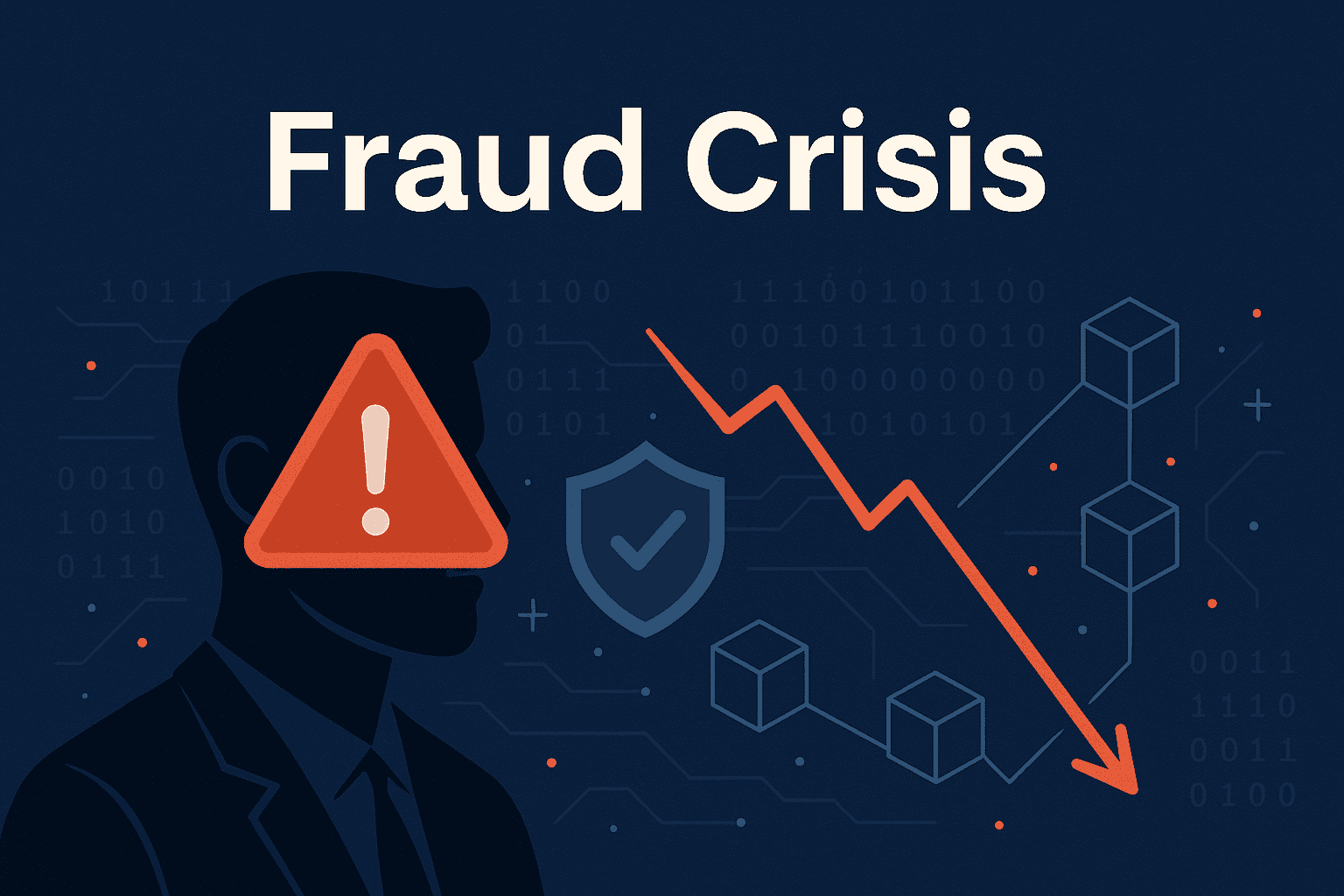Cryptocurrency was built on the promise of transparency and decentralization. Yet, as the industry has grown, so has the scale of deception. In 2024 alone, scams drained $9.9 billion from unsuspecting users, according to the latest crypto fraud statistics. Already, 2025 is shaping up to be another record year. This isn’t a blip on the radar, it’s a fraud crisis.
The irony is hard to miss: blockchain is fully public, yet nearly impossible for most people to interpret. Transparency without comprehension doesn’t create safety. It creates vulnerability. And fraud thrives in that gap.
The Fraud Crisis: What’s Different About 2025
Fraud in crypto is not new, but 2025 marks a turning point. Three converging factors are making this year critical:
Scale of Adoption
With global crypto ownership edging closer to 10%, the pool of potential victims has never been larger. More beginners means more targets.Evolving Attack Tactics
Scams are no longer limited to obvious Ponzi schemes. Sophisticated methods like wallet poisoning and phishing scams are designed to slip past even experienced users.Erosion of Trust
Surveys show that 63% of Americans don’t trust crypto safety, despite billions invested in the space. This lack of trust is a direct brake on mainstream adoption.
The fraud crisis is no longer just about money lost. It’s about the future trajectory of the entire industry.
Impact on Users: More Than Just Numbers
Behind every billion-dollar headline are real people who thought they were safe:
A father sending tuition money to what looked like a verified wallet, but turned out to be a poisoned address.
A startup treasurer approving a contract interaction that drained their entire treasury overnight.
A first-time buyer losing their entire savings in a too-good-to-be-true NFT drop.
These stories underscore the emotional weight of the fraud crisis:
Fear: Many users avoid transactions altogether out of worry they’ll make an irreversible mistake.
Shame: Victims often blame themselves, which discourages reporting and learning.
Exclusion: Those without technical literacy are effectively locked out of participating safely.
The result? A technology meant to be empowering ends up alienating the very people it was designed to include.
Analysis: Why Fraud Keeps Happening
To understand the fraud crisis, it helps to look at systemic patterns:
Transparency Paradox: The blockchain is open, but unreadable. Wallet addresses look like random strings of characters, and transaction flows resemble endless spreadsheets.
Asymmetry of Knowledge: Attackers exploit complexity. They only need one clever trick; users need constant vigilance.
Lack of Accessible Tools: Most block explorers are built for developers, not everyday users. They show raw data, not human-readable insight.
Reactive, Not Proactive: Current fraud detection tools often flag issues after damage is done, rather than providing real-time intervention.
Fraud keeps happening not because blockchain is inherently unsafe, but because the interface of trust has failed.
The Solution: Making Trust Visual
If fraud thrives in confusion, then clarity is the cure. That’s where Visual Trust Infrastructure comes in.
Visual Trust doesn’t ask users to parse hashes or decode technical jargon. Instead, it uses shapes, colors, and lines to make blockchain legible at a glance:
Shapes Tell Roles: A ring equals a wallet, a square equals a contract, a triangle equals an exchange.
Colors Signal Safety: Green means verified safe, orange signals caution, red marks known scams.
Lines Map Movement: Direction and thickness show where value flows and how much is at stake.
When combined with real-time fraud detection, Visual Trust gives users something they’ve never had before: the ability to see danger before they click confirm.
This approach is not cosmetic. It’s foundational. By transforming complexity into clarity, Visual Trust rebalances the playing field:
Beginners can participate without constant fear.
Power users get faster, more confident decision-making.
Communities gain shared intelligence through fraud reporting and verification.
Fraud prevention becomes not a specialist skill, but a shared language.
Looking Ahead: From Fraud Crisis to Trust Infrastructure
The fraud crisis is forcing the industry to confront an uncomfortable truth: transparency alone isn’t enough. If blockchain is to reach its full potential, it needs an interface layer that makes trust tangible.
2025 doesn’t have to be remembered as another record year of losses. It can be remembered as the year crypto shifted from confusion to clarity. From raw data to real trust. From crisis to infrastructure.
At Hindsight VIP, we believe the next billion users will ask a simple question: Is it safe?
Our job, and the industry’s job, is to make the answer obvious, visual, and immediate.
The fraud crisis won’t solve itself. But together, we can redefine how trust is built in Web3.
If you’re ready to explore how visual blockchain analytics and Visual Trust Infrastructure can make your ecosystem safer, start with the Visual Explorer. Because in crypto, safety isn’t just a feature, it’s the foundation.
